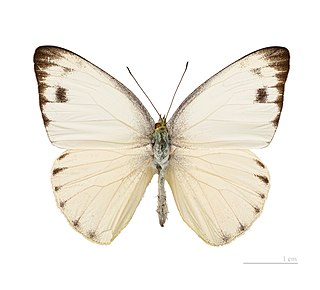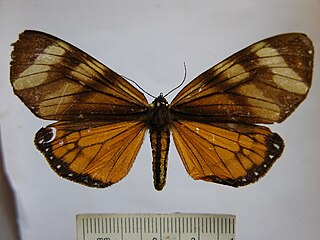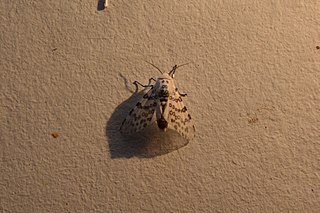
Hermia is a fictional character from Shakespeare's play, A Midsummer Night's Dream. She is a girl of ancient Athens named for Hermes, the Greek god of trade.

Appias, commonly called puffins or albatrosses, is a genus of butterflies in the subfamily Pierinae (whites) found in Africa and southern Asia.

Danaus, commonly called tigers, milkweeds, monarchs, wanderers, and queens, is a genus of butterflies in the tiger butterfly tribe. They are found worldwide, including North America, South America, Africa, Asia, Indonesia and Australia. For other tigers see the genus, Parantica.

The genus Aellopos consists of large day-flying moths in the family Sphingidae. It was first described by Jacob Hübner in 1819. Species in this genus occur from Maine in the United States through Central America and down to Argentina and Uruguay in South America.
Elysius is a fictional character appearing in American comic books published by Marvel Comics.
Elysius is a genus of moths in the family Erebidae. The genus was erected by Francis Walker in 1855.
Hermias was a Neoplatonist philosopher who was born in Alexandria c. 410 AD. He went to Athens and studied philosophy under Syrianus. He married Aedesia, who was a relative of Syrianus, and who had originally been betrothed to Proclus, but Proclus broke the engagement off after receiving a divine warning. Hermias brought Syrianus' teachings back to Alexandria, where he lectured in the school of Horapollo, receiving an income from the state. He died c. 450 AD, at a time when his children, Ammonius and Heliodorus, were still small. Aedesia, however, continued to receive an income from the state, in order to raise the children, enabling them to become philosophers.

Eudocima is a genus of moths of the family Erebidae first described by Gustaf Johan Billberg in 1820.

Gonodonta is a genus of moths in the family Erebidae. The genus was erected by Jacob Hübner in 1818.

Ophiusa tirhaca, the green drab, is a moth of the family Erebidae. The species was first described by Pieter Cramer in 1777. It is found in southern Europe, Africa, Australia and the southern parts of Asia.

Utetheisa lotrix, the salt-and-pepper moth or crotalaria moth, is a moth of the family Erebidae. The species was first described by Pieter Cramer in 1777. It is found in most of the Old World tropics.

Dysschema eurocilia is a moth of the family Erebidae first described by Pieter Cramer in 1777. It is a common species throughout tropical America, where it has been recorded from the Antilles, Central America and South America.

Hypercompe icasia is a moth of the family Erebidae first described by Pieter Cramer in 1777. It is widely distributed in South America and is also found on Martinique, Guadeloupe, Saint Martin, Dominica, St. Kitts, Nevis, St. Thomas and Puerto Rico.










